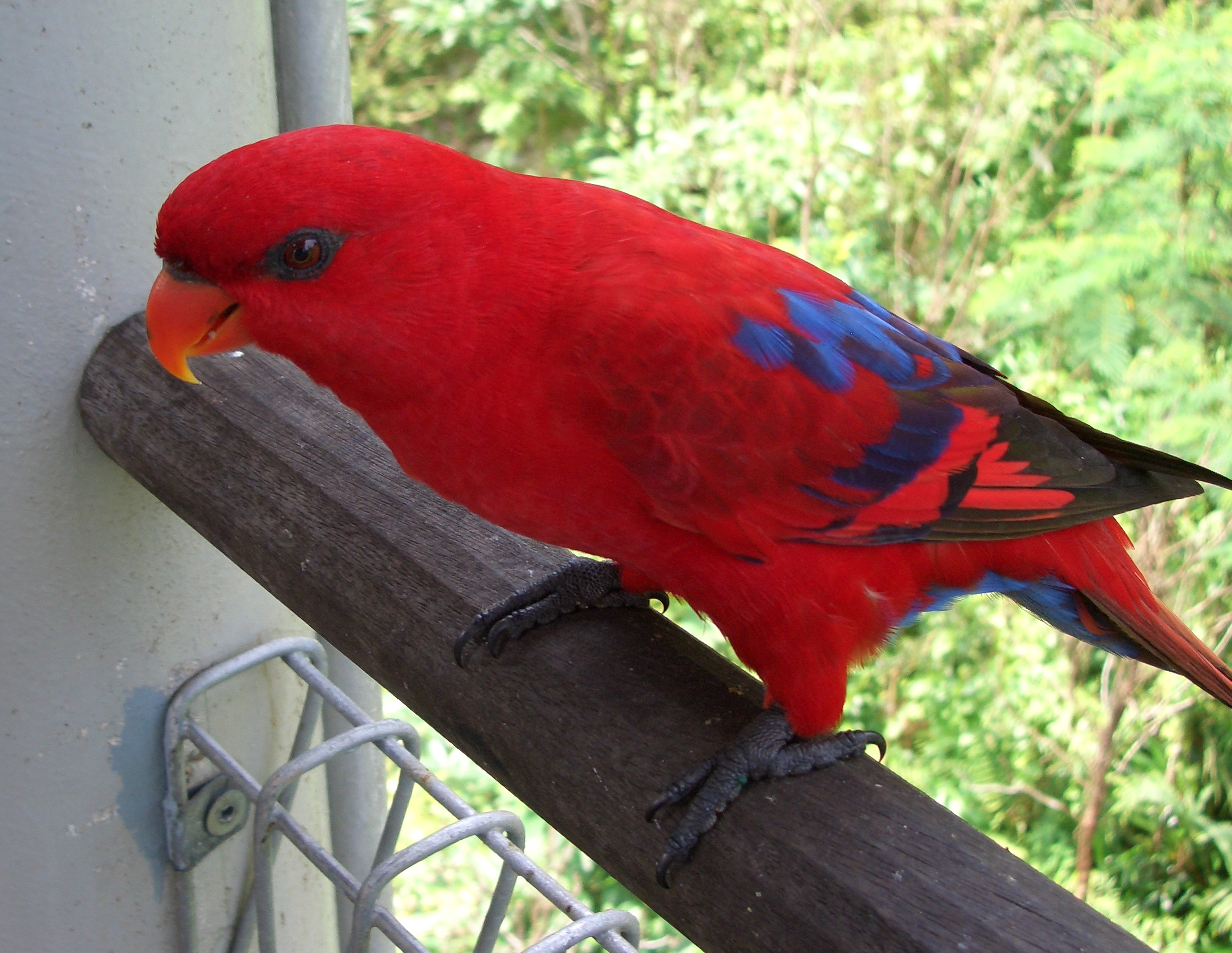
Red lory, orMoluccan red lory, orMoluccan lorry, orBuru lory(Eos bornea)
Phylum —chordata
Class — aves
Order — psittaciformes
Family — psittaculidae
Genus – eos
Appearance
The Red lory is about 31 cm (12 in) long. They weigh 30-300 grams. It is mostly red and all the plumage of the upper body is red. There are red, blue, and black marks on the back and wings, and the tail is reddish-brown with blue under-tail coverts. The beak is orange and the legs are grey. The male and female have identical external appearance. A defining characteristic of a lory is their brush tongues with papillae at the tips to help them feed on pollen and nectar.
Habitat
The Red lory is endemic to the Moluccas and surrounding islands in Indonesia.
Behavior
Red lories are outgoing and cheerful birds, entertaining their owners with their clownish antics and play. These mischievous birds are intelligent and always looking for their next adventure.
Diet
In the wild, lories eat nectar, pollen, fruits, and occasional insects.
Reproduction
Birds first come sexually mature at around 8 months and can produce up to three clutches per year, each with two eggs. Incubation takes approximately 25 days. Young fledge between 7-9 weeks and can be independent in a further 3-4 weeks.
In captivity
Red lories generally live to between 15 and 28 years of age.
The Red lory is extremely active, so it should be housed in as large an enclosure as possible to ensure it has lots of space to fly, climb and play when inside its cage. Lots of time outside the cage is also essential for these playful and social birds. Ideally, choose an enclosure that is at least 24 inches deep by 36 inches wide and 36 inches tall. Choose a cage that’s easy to clean (something you can hose down is ideal). Red lories are quite messy because their high-liquid diets result in lots of liquid droppings. You might want to lay plastic down under the cage to help contain the projectile poop.
You can purchase a commercial nest box or make your own. Provide a variety of perches in different shapes and sizes, taking care to ensure they are not above food or water sources to prevent contamination with feces. Ropes and chains for climbing are essential. Toys are also important for Red lories. They love to play so provide many different toys—like swings, blocks, mirrors and bells—made of many different materials, such as sisal, cotton, leather and wood. Toys that rattle or ring are also favorites. Make sure your toys are sturdy so they hold up. Routinely rotate your Red lory’s toys to keep them interesting and enticing.
Red lories require daily baths. You can simply mist the bird with a water bottle or let them play in a shallow bath, which doubles as great playtime for the bird.
The Red lory has very unique dietary requirements. The Red lory feeds mainly on nectar. Red lories also enjoy soft, very ripe fruits and some vegetables. Red lories that are kept as pets eat commercial nectars intended to replicate their diet in the wild. Commercial nectars come as a dry powder and must be mixed fresh at least twice a day. To prevent spoilage, uneaten nectar should be discarded after a few hours and replaced with fresh nectar at the next feeding. Uneaten fresh fruits should also be discarded after a few hours and replaced with new fruit at the next feeding. Fresh water should be available at all times.
The Red lory’s diet of nectar is very wet and Red lories have short digestive tracts. This means Red lory poops are also very wet and copious—even projectile. Messy poops (lots of them) are a reality of living with a lory—both inside and outside of their cage. However, the good news is Red lories are extremely intelligent. Some owners have had luck training their Red lories to poop in a specific spot on command to help contain the mess.
 Russian
Russian
 English
English























